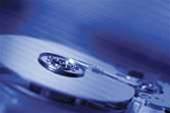
Samsung said that the SSDs also consume nearly 75 percent less power than typical drives, at 1.45W compared to 2.1W, and are much lighter than hard disk drives.
"There will always be a market for HDDs but we see growing demand for our new SSDs, especially now that they are available with the Sata II interface," said Jim Elliott, director of Flash marketing at Samsung Semiconductor.
"SSD technology is especially viable for the business and high-end consumer notebook markets because of its outstanding performance, as well as the added value gained from virtually no downtime and faster operating speeds."
The Sata II SSD comprises a single-level cell Nand Flash memory which has no moving parts, is noise-free, produces very little heat and is much less susceptible to the shocks and vibrations that can be challenging to traditional disk drives.
The Sata II SSD can resist up to 1500Gs of shock in a half millisecond compared to a shock resistance rating of 300Gs in two milliseconds for a typical HDD.



_(20).jpg&h=140&w=231&c=1&s=0)
.png&h=140&w=231&c=1&s=0)



_(26).jpg&w=100&c=1&s=0)

 iTnews Executive Retreat - Security Leaders Edition
iTnews Executive Retreat - Security Leaders Edition











_(1).jpg&h=140&w=231&c=1&s=0)



